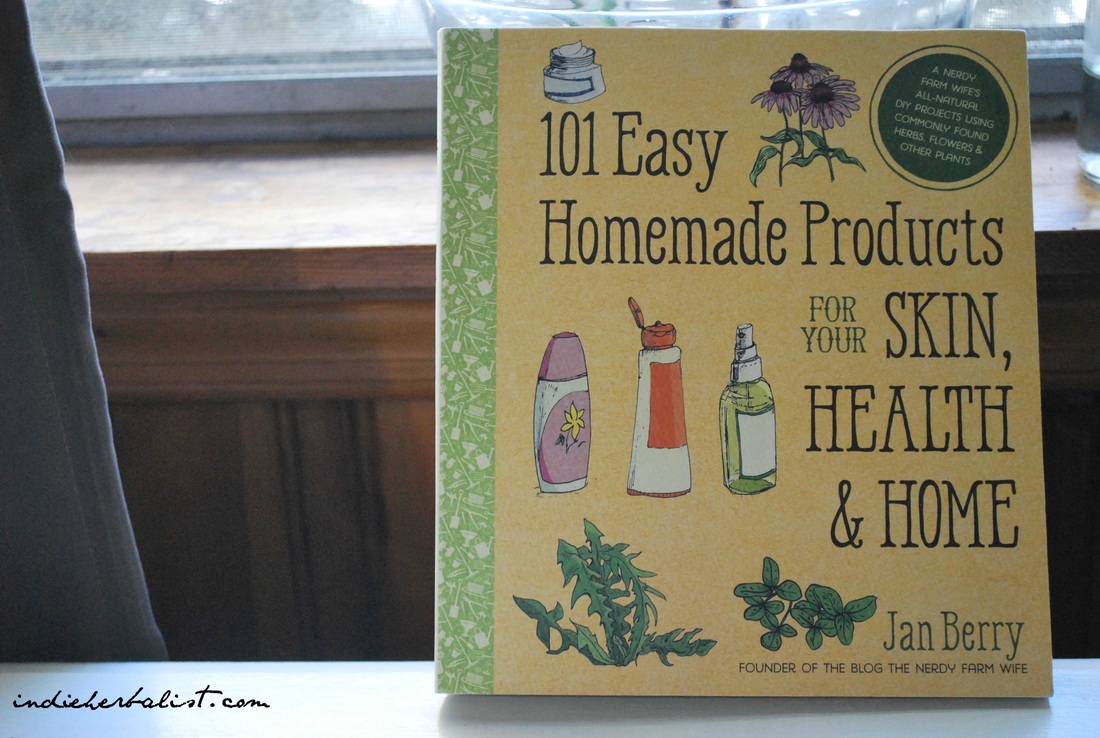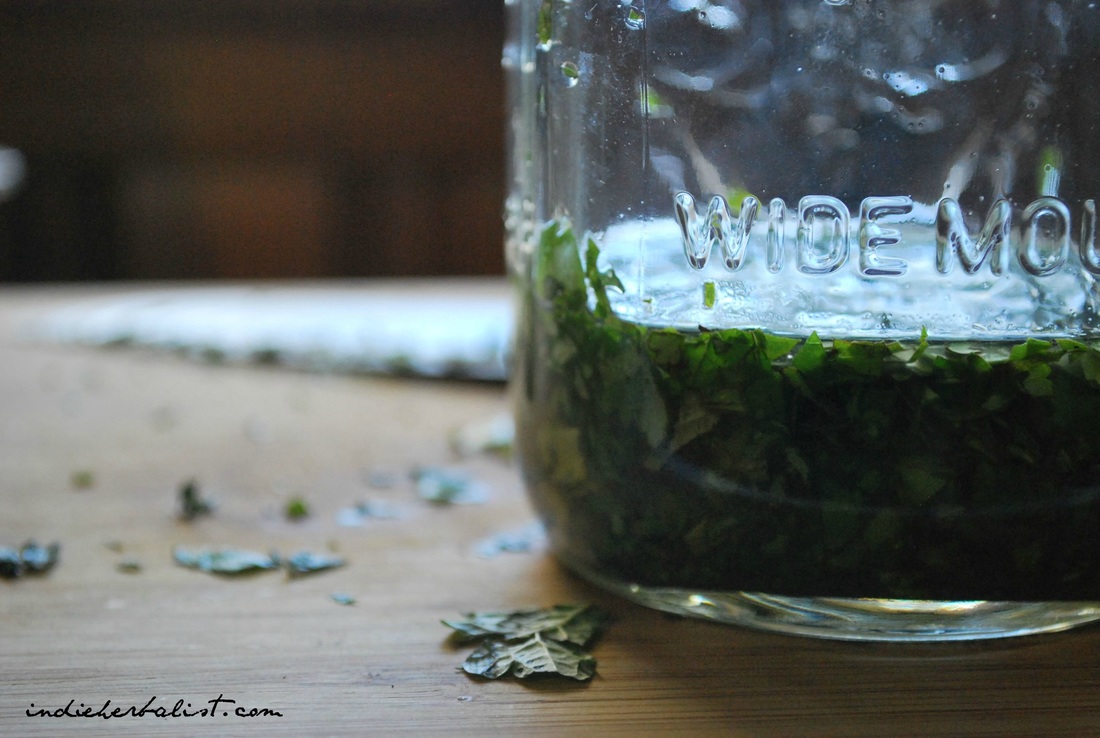Links contained in this post and elsewhere on my website may include affiliate links. When you make a purchase through these links, I earn a commission at no additional cost to you. I only link to products and services that I love - and that I think you will love, too!
I’ve been looking for some herbal insect repellent recipes to play around with, and Jan Berry, founder of The Nerdy Farm Wife blog, developed an herbal bug spray that I can’t wait to try out this year. It’s one of the recipes in her new book, 101 Easy Homemade Products for Your Skin, Health, and Home.
Jan’s book has been eagerly awaited by many of us who follow her blog, because her recipes are always super creative and so much fun to make. As an herbalist, I love that so many of her recipes use actual herbs rather than relying on (very trendy, very resource intensive, very expensive) essential oils. Essential oils are included as an optional ingredient in many of her recipes, which is a really neat approach- if you have them, you can use them. If you don’t, no big deal!
She sent over a copy of the book for me to review, and I have literally been jumping up and down squealing about the recipes. Thankfully the postal clerks all know me, because this started pretty much as soon as I pulled it out of the envelope at the the post office. I’d read the eBook already, but the print version is even better. This is the book:
Doesn’t it make you want to stop everything and go make something? Yeah, me too! I thought you guys would want to see the recipe for Catnip and Basil Insect Repellent Spray , so I got permission from Jan and her publisher to share it below. There are actually several herbs you can substitute depending on what you have handy. Case in point, I followed one of Jan’s recommendations and went with lemon balm instead of catnip.
And, if you can’t wait to get your own little paws on a copy, we’re doing a giveaway here on Indie Herbalist- you can enter at the end of this post!
From 101 Easy Homemade Products for your Skin, Health, and Home by Jan Berry
Yield: 1 Cup
1/2 cup (10g) fresh catnip and basil leaves, chopped
1 cup (250ml) witch hazel
citronella, basil, lemongrass, and/or lemon eucalyptus essential oils
water, for diluting
For the Herb-Infused Witch Hazel
Place the catnip and basil leaves in a pint jar. Pour the witch hazel over the herbs. You may need to add a little extra witch hazel to ensure that the herbs are completely covered. Cap the jar and tuck it away in a dark cabinet for 1 week, then remove and strain. The finished infused witch hazel should stay fresh at least 9 months to 1 year.
For the Bug Spray
Fill a small 2-ounce glass spray bottle with the infused witch hazel. Add 3 or 4 drops total of your favorite bug-repelling essential oils, such as citronella, basil, lemongrass, or lemon. Fill the rest of the bottle with plain water, cap and shake. “
You will probably need to re-apply your insect repellent often- anywhere from every 30 minutes to every 2 hours, depending on your body chemistry. Make sure you shake the spray well each time you reapply so that the essential oils are evenly dispersed in the liquid. Jan notes that the insect repellent will be most effective if you include the essential oils, but that you should double check with your doctor before using the essential oils if you are pregnant, nursing, or have other health concerns.
All the best,
Agatha





